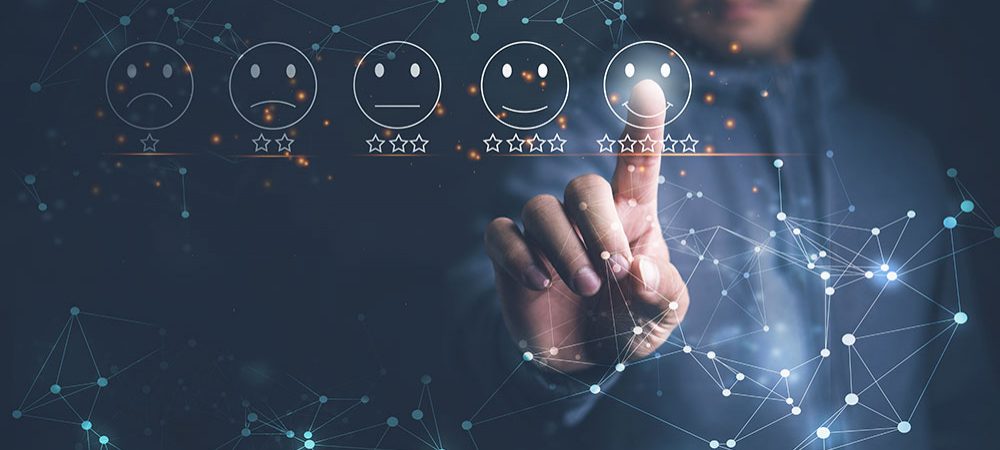Digital Transformation means technology services are more readily available and as a result, consumers expect those services to meet their expectations and enhance their experience. Gopalakrishnan Krishnamurthi, Global Leader for ADMnext at Capgemini, discusses how businesses can bridge the gap between these shifting expectations and IT reality.
The rapid evolution of mobile capabilities and Internet of Things (IoT) technology have transformed how businesses engage with potential customers, and consumers have become exponentially empowered as a result. Any person with a Smartphone and Internet connection can become a broadcaster, influencer and commentator. And, given that consumers today are unafraid of speaking out when services do not meet their expectations, maintaining customer satisfaction is now essential for business survival.
Consumers expect intuitive, seamless and instantaneous interactions across all touchpoints of a business and this is increasingly enabled through applications. However, what we’re now seeing is that customers’ demands and expectations are outpacing the digital capabilities of many organisations. They simply can’t keep up. Managing the customer experience is as important as creating a good product or service when it comes to loyalty and retention.
In real terms, this means the quality of experience when using an application can increase a consumer’s expectations for any interaction they may have with the wider IT ecosystem of a supplier.
As many businesses adjust to the COVID-19 market reality, application excellence has become mission-critical for brand survival and revival. Businesses with poorly optimised applications risk losing existing customers, let alone attracting a loyal new customer following. But how can businesses bridge the gap between these shifting expectations and IT reality? For business leaders today, the puzzle is two-fold.
The first challenge lies in developing a view of what customers want and what matters to them. Businesses must understand the layers that determine a customer’s perception of and reaction to their brand, and how they can mobilise to meet these needs accordingly.
The second is in addressing the difference between these expectations and what a business can offer by closing IT gaps.
Bridging the gap towards zero-latency
Businesses today require applications and IT that work with new technologies to bring about meaningful transformation. This means simpler, more predictable, scalable, cost-effective and outcome-based consumption models that are smoothly deployed and focused on key business goals. To guarantee that IT and business applications can deliver in this rapidly changing landscape, it’s crucial to create a blueprint for harmonising the goals of IT functions with business needs. To achieve this, businesses need to break down IT barriers to create a ‘zero-latency enterprise’, wherein business leaders are meeting their own needs as well as satisfying customer expectations.
Gartner defines a zero-latency enterprise as one that ‘exploits the immediate exchange of information across technical and organisational boundaries to achieve business benefit’. To transform into a customer-led business, an organisation-wide mindset-shift is needed. Three main points need to be taken into consideration:
- IT needs to keep tabs on emerging technologies and explore them constantly for the benefit of the business.
- Innovation needs to be continuously applied: there is no one-off solution. Business’ IT needs continuous innovation, so that IT systems can offer new technologies that solve business problems in near-real time.
- Embodying a mindset of zero latency innovation demands a behavioural change – switching from a delivery-based paradigm to a problem-solving one.
As today’s trends become tomorrow’s norm, a proactive stance is the only way to leapfrog the competition. An open and collaborative approach and harnessing real-time innovation across the entire ecosystem are integral to making this happen. It’s here that a unified, seamless and innovation-centric IT business collaboration can ultimately deliver a zero-latency customer experience – where they can intuitively engage with a brand like never before.
Paving the road ahead – defining your business imperatives
Once this change in mindset has been realised, business leaders need to align IT with their strategic imperatives. Businesses today are increasingly complex and comprise ecosystems with more suppliers and stakeholders than previously thought possible. For businesses looking to harness their IT potential, strategic partner programs and true collaboration are critical to their success. For this to work, the goals of an organisation’s IT need to be dynamic. While operational efficiency and cost effectiveness remain core imperatives, businesses need to expect IT to function as a true partner and not just as a cost centre. Developing, deploying and maintaining IT systems is simply not enough. It’s about aligning IT with measurable business performance goals and outcomes.
The road ahead for most businesses is not easy. Many organisations fall prey to legacy-minded ways of working and often invest poorly in their IT infrastructure, choosing front-end application servicing over an investment in middle- and back-end operations – forfeiting a better customer experience. It’s important to be wary of causing service fragmentation by procuring price-focused contracts, which can often lead to a lack of end-to-end value chain ownership.
Customer engagement is the single most important way for businesses to differentiate themselves in today’s marketplace, and the most successful organisations are those that see the bigger picture. Consumers are ready and willing to put their money where their mouths are and reward those who they feel provide a superior experience. With applications becoming the face of business services consumed by end-users, those organisations that invest in tying their business operations and IT infrastructures to customer experience will reap greater rewards in the long run.


